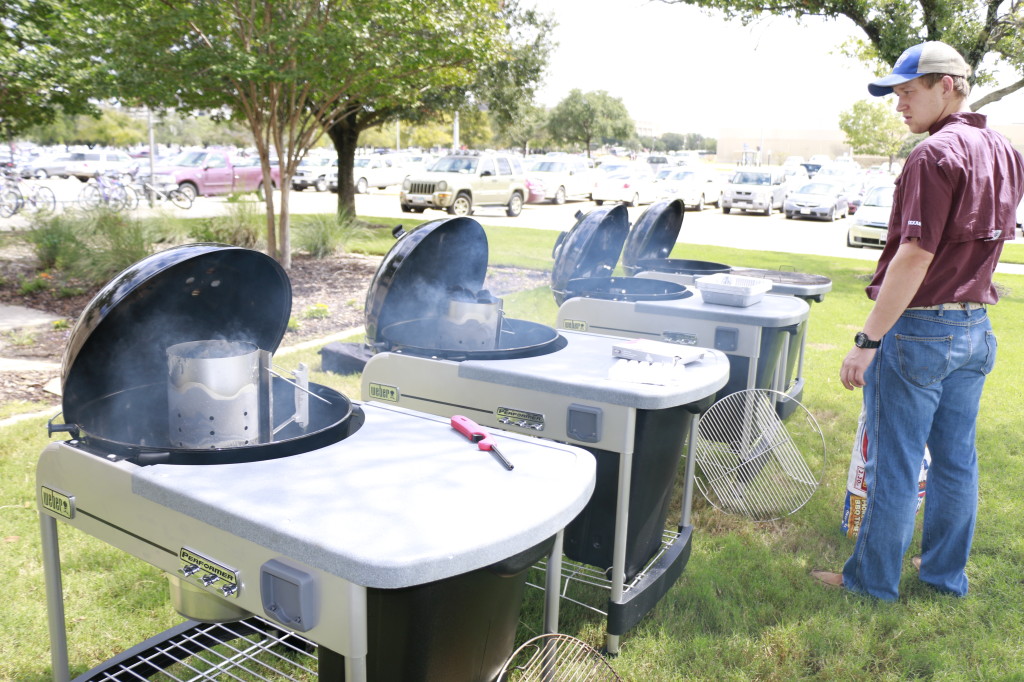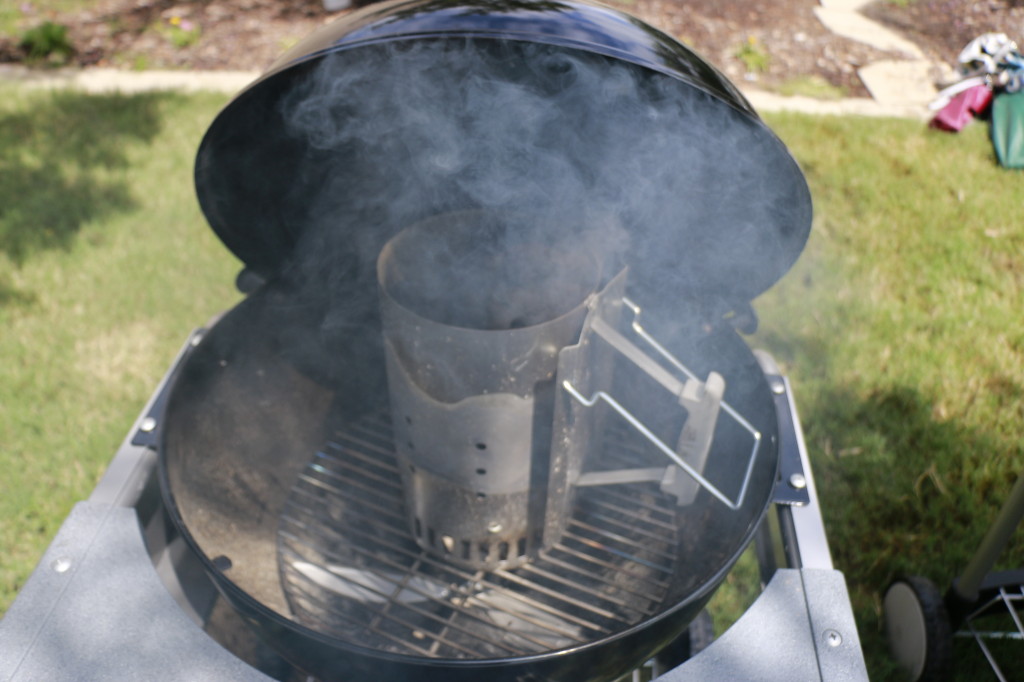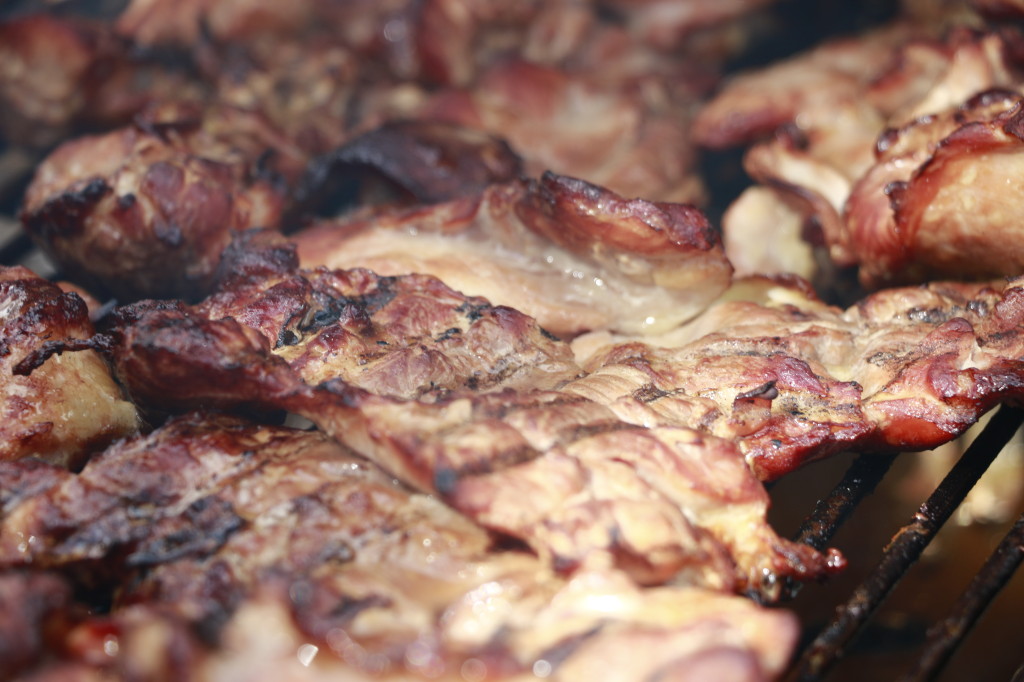Two key parts of preparing barbecue is to provide heat for cooking, through a source of fuel, and to provide smoke, through burning wood. Sometimes the fuel and smoke are combined as when logs such as oak or hickory are used to cook with.
Sources of fuel may include but are not limited to:
- Chunk charcoal
- Charcoal briquettes
- Propane
- Logs
Sources of smoke may include but are not limited to:
- Hickory
- Oak
- Mesquite
- Pecan
- Apple
- Cherry
For this class, we cooked unseasoned chicken thighs using Weber Performer® Gold grills set up for indirect cooking. Charcoal briquettes were started in Weber Rapidfire® Chimneys, lit briquettes were placed in the Weber Charcoal Baskets, and one of four smoking chips were used to generate smoke: hickory, oak, pecan, and mesquite.
Students sampled the four groups of chicken thighs cooked with the different wood chips and the preferences were:
- Mesquite
- Hickory
- Pecan
- Oak
Of the 31 students in the class, we probably have more who grew up eating meats smoked with mesquite than any other wood. In the past, we have observed that our students from South or West Texas seem to prefer mesquite-smoked meats because that is what they are used to eating. There are no correct answers about which smoke is best, and individual preference is most important to matching the smoke with the meat. It may be that the most important aspect of smoke is getting the correct amount on the meat, not too much or not too little.







